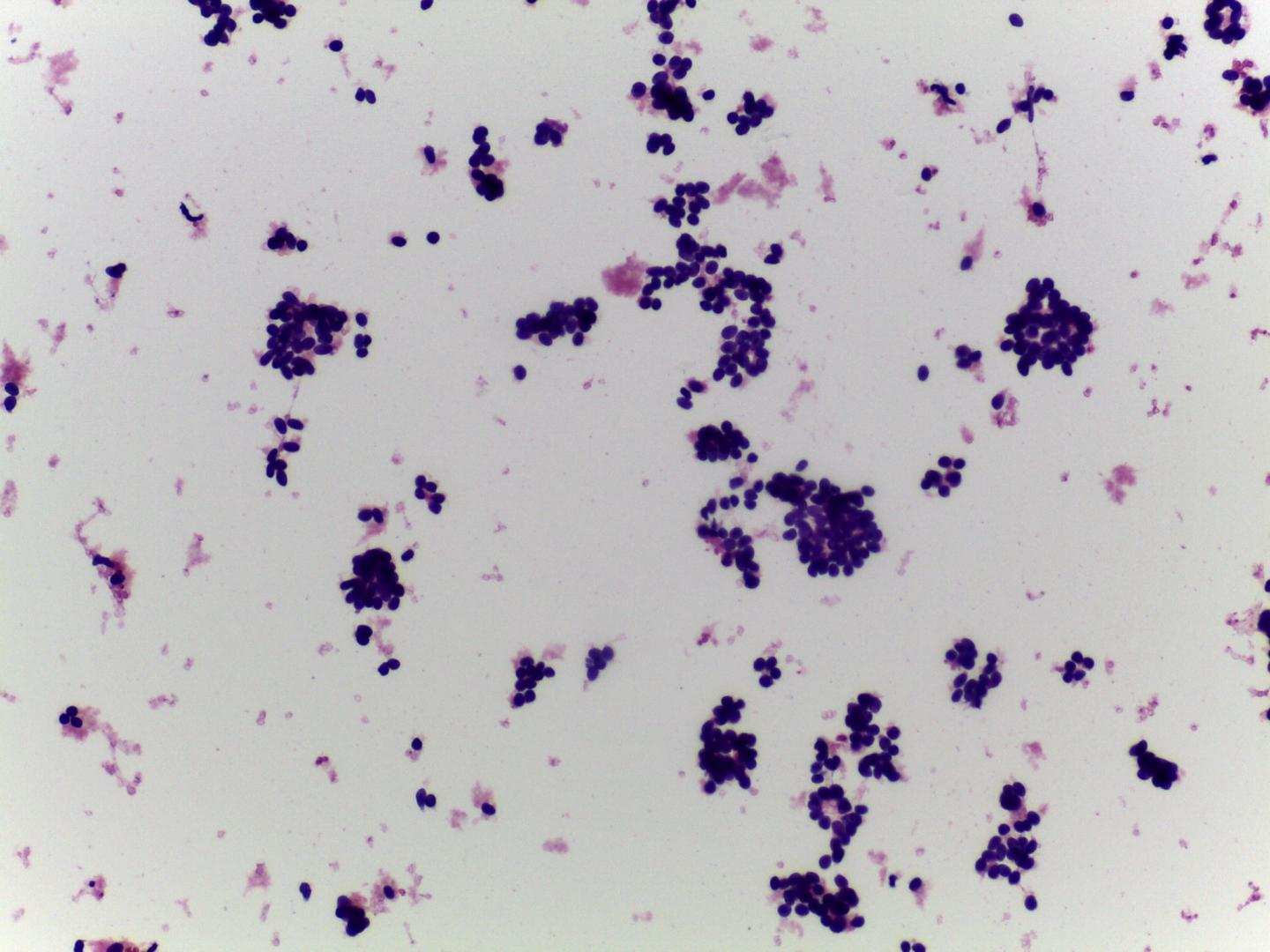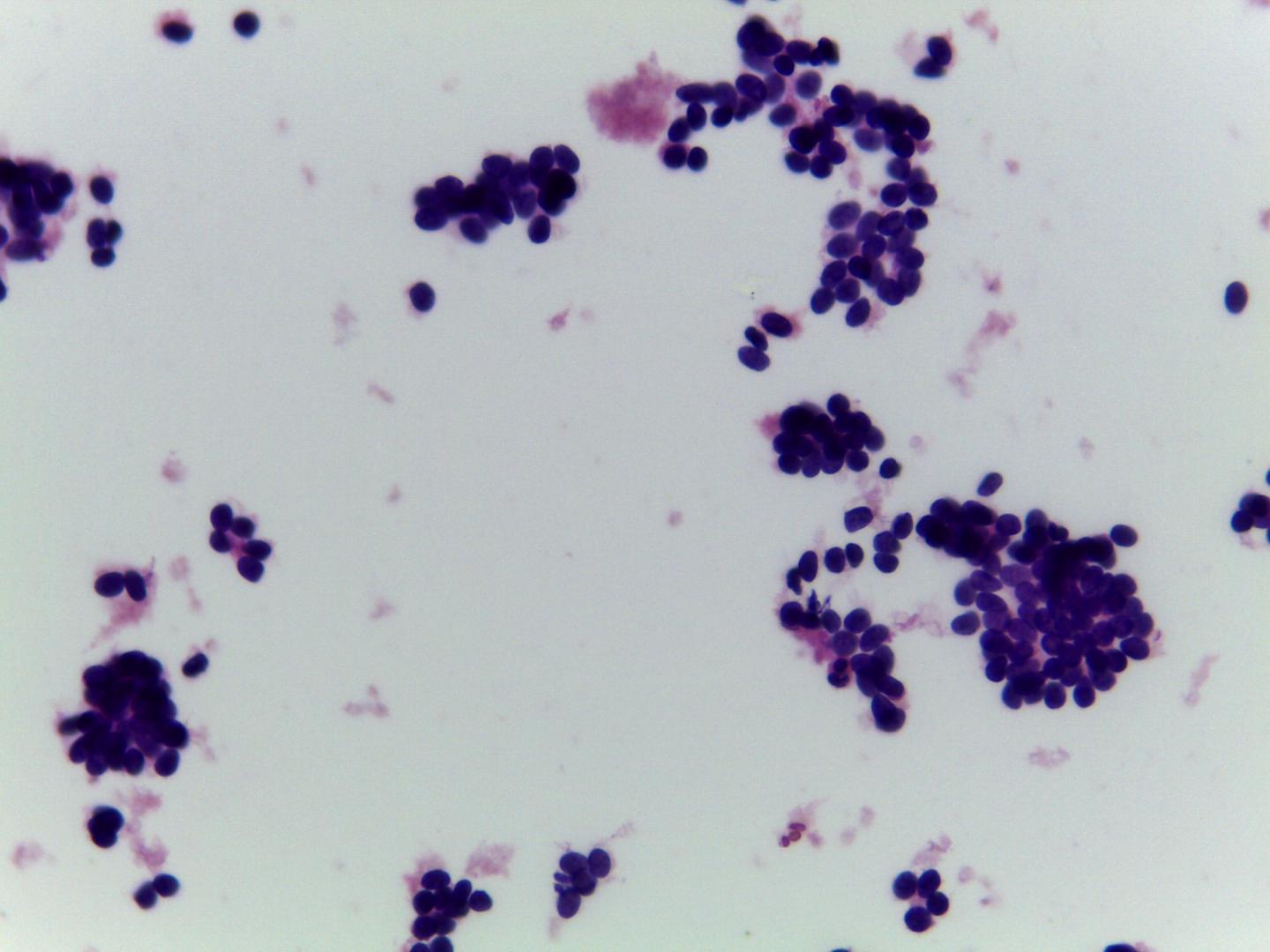Clinical features
- Benign neoplasm composed of Metanephric tubular –like primitive cells
- Mean age- 41 years
- Range: 11 months- 83 years
- range of age: 50-60 years-old
- Most frequent in females
- Clinical symptoms: flank pain, haematuria and polycythaemia
- These tumours are part of a spectrum of tumours composed by different proportions of epithelium and mesenchymal/stromal tissue (metanephric adenoma, metanephric adenofibroma or metanephric stromal tumour).
- The idea that some author’s advocate that this tumour may be related with papillary renal cell neoplasms is controversial (Pins M et al 1999).
Fig 12a – Metanephric adenoma- Monomorphous small blue cell population in a clean background forming small tubules or rosettes.(H&E), Cells have round or oval nuclei show no atypia and a minimum amount of cytoplasm.
- Monomorphous small blue cell population in a clean background
- Clusters, tubules papillae or rosettes
- Numerous regular naked nuclei are usually present.
- Round or oval nuclei show no atypia and a minimum amount of cytoplasm.
- The chromatin is dense and regularly distributed and nucleolus is inconspicuous
- No necrosis in the background and mitoses are seen.
- Psammoma bodies can be seen in the center of tubular structure
Immunocytochemistry
- CD57: Positive-intense
- WT1: Positive
- AMACR: positive
- Pax 8: positive
- CK7: negative
- CD56: Negative( some cases of positivity reported)
- EMA: Negative
Genetic studies
- 2p deletion
- BRAF mutation- 90%
Differential Diagnosis
- Wilms tumour (epithelial predominant)
- Patients are generally younger than 6 years-old
- Extensive sampling might reveal other Wilms tumour components (blastema, mesenchyma)
- Blastema is CD56 positive and CD57 negative
- Wilms tubules are CD57 positive and CD56 negative -similar to immunoprofile of MA
- No BRAF mutation
- Solid variant of papillary (chromophil) RCC
- cells are larger and show moderate amounts of cytoplasm
- Macrophages are frequently present
- CK7: Positive, diffuse and intense
- EMA: Positive, diffuse and intense
- WT1 : negative
- AMACR: positive
- trisomy 7 and 17 and sex chromosome loss
Main Points
- Most cases represent incidental findings.
- Some cases, however may course with polycythaemia, abdominal pain or haematuria. S
- Only recently two cases of metastasized metanephric adenomas were published.



